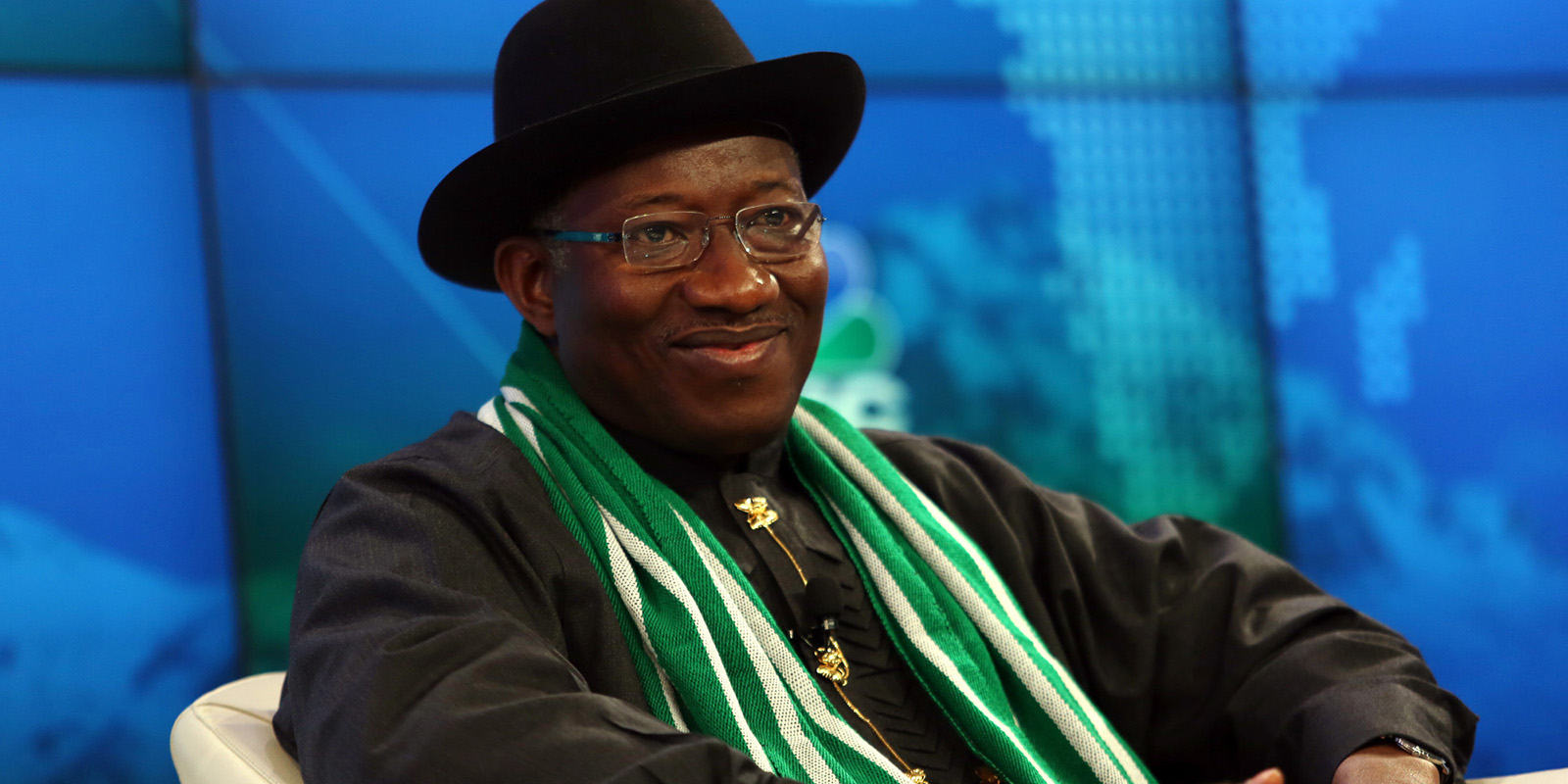by Aziza Uko and Jill Stevenson
Today’s developing nations are only as strong as their government’s education sector. And Nigeria is no exception. Recognising the necessity of a skilled and intellectual pool of talent with which to rebuild and power Nigeria into economic independence, President Goodluck Jonathan has focused on creating educational institutions where he can develop Nigeria’s human resources – places where the country’s ambitious youth can succeed, despite a meagre financial income and poverty-stricken background.
Indeed it has already been well-documented that Goodluck Jonathan himself, during his early education, had “no shoes, no school bags” and was forced to “walk miles and cross rivers to school every day.” He later went to secondary school, and then to the university, where he gained a degree in zoology, and later a PhD. Today, he is recognised as Nigeria’s best-educated President ever. And there is no doubt that the President’s own boyhood experience has fuelled his determination to ensure that every child in Nigeria receive equal access to education.
Earlier this year, he publicly declared: “Education is the only foundation that can ensure the consistent growth of a nation. I have always believed that a nation will not become great by the minerals under her ground. Such will only come by developing the human resources of the country.”
One way in which he is convinced democracy in education can be achieved is via the introduction of his PDP government’s federal university building programme. Jonathan has established 12 new universities, to ensure that every state in Nigeria has a federal institution of higher learning. Nine of these universities were sited in the North, while three were sited in the South, namely Jigawa, Katsina, Gombe, Nasarawa, Kogi, Taraba, Yobe, Kebbi, Zamfara Ebonyi, Bayelsa, and Ekiti.
Under the auspices of the Tertiary Education Trust Fund (TETFund) and keen to encourage learning in science and technical subjects, the President ordered modern laboratory equipment for 51 Nigerian polytechnics. Other educational institutions to benefit from the laboratory refurbishment programme included 104 Federal Unity Colleges, 62 ICT centres and 40 Maths classes.
The Fund also stretched to building a total of 125 Almajiri schools in 13 states in order to allow children who had previously never received schooling, or were forced to learn under trees, to receive quality education in a classroom for the first time ever. This, it is intended, will allow them to compete on an equal stage with those in the south of Nigeria. And that’s not all. There are plans to build a further 275 school rooms. A Memorandum of Understanding (MOU) has also been signed between government and federal leaders to ensure certain conditions and therefore sustainability in the schools. Another disenfranchised group before the Goodluck Jonathan administration was girls. But the PDP has seen to it that under the Girl-Child Education Policy 27 girl-only schools (many of them boarding) have been – or will be – created in locations such as Adamawa, Yobe, Zamfara, Nasarawa, Ebonyi, Ekiti, Delta and Akwa Ibom.
All of the above has helped to boost the number of children educated in Nigeria from 20 million to 30 million over the four years in which Goodwill Jonathan has been in power. It’s no mean feat considering opposition from fanatical Islamists in the north of the country who are determined to deny education to thousands of girls.
At present statutory education for youngsters in Nigeria comprises six years of primary school and three of secondary school. However, when the President took over, it was believed only two-thirds of children went on to secondary. He has made it his business to ensure that all youngsters go on to secondary school, thanks to his National Campaign on Access to Basic Education. Equally as impressive, today 75 per cent of students gain an O’level pass in English and Maths.
As well as the above major reforms, other Educational achievements for President Goodluck Jonathan over his four-year presidency include:
- The Early Childhood Care and Development Education (ECCDE) programme – all primary schools ordered to provide pre-school education. A total of 19.67 million textbooks and teaching manuals focusing on English, Maths, Science/Technology and Social Studies for the education of children in primary one and two.
- Safe Schools Initiative – a campaign launched to ensure young people feel safe attending school.
- Nigerian Research and Education Network (NgRen) – Launched in July 2014, this $10 million fund is aimed at fostering relations between Nigeria’s educational and research institutions with those worldwide. This is to be achieved partly by investing in technology in terms of videoing and teleconference facilities.
- Training for school teachers and college lecturers, including sponsoring 7,000 post-graduate training courses for lecturers in order to improve curriculum delivery
- Presidential Special Scholarships for Innovation and Development (PRESSID) – 101 graduates were given sponsorship to study for a PhD abroad in top universities
- Enterprise Institutions established to offer an alternative to university education, focusing on technical and vocational skills
- Number of National Certificate of Education (NCE) awarding bodies increased by 28 over the last three years
- The number of college students increased 20 per cent from 2011 to 2013, with the total number around 750,000
- The National Open University of Nigeria (NOUN) increased the number of students enrolled to 250,000 a year.
It is clear from the above that Goodluck Jonathan’s Four Year Strategic Education Plan had many tiers – to widen access to education geographically and in terms of social class, to improve the standards of education by ‘educating the educators’ and to provide the necessary equipment, technology and environment in order to allow further education to flourish and foster international research/technology partnerships.
Overall, from the first day in his presidency, it was clear to Goodluck Jonathan that the education system of his country needed to be both managed – and funded – far more efficiently and generously than it had been. Certainly, today’s education budget is twice that of the previous administration and staff are far better able to deliver a national curriculum to a wider audience. Continuation of this strategy may indeed lead to the President’s determination to get Africa to “turn its begging bowls into baskets of prosperity and opportunity.”
Aziza Uko is Executive Editor of The Trent. She is also Chief Executive of Ziza Group, a company she founded in 2009. She is award winning graduate of marketing and a marketing communications professional with over 16 years post graduation experience. She is a writer, editor, and music lover. She can be reached on email HERE, on Twitter at @azizauko, and Facebook HERE.
Jill Stevenson is a veteran UK journalist and public relations expert with 18 years professional experience, 1o of which were spent in national newspapers such as the Daily Mail, Daily Express and The Scotsman. She has also been employed in public sector PR for eight years. She has recently had full-length features published in trade magazines such as Inside Housing, Drink & Drugs News and Nursing Scotland. You can reach her on her blog Jetcomms.com or Facebook.
You may read the first editorial in this series, X-Raying Nigeria’s Greatest Democratic Achievement; and the 2nd, Fighting Corruption Differently And Getting Results, the 3rd, President Jonathan Builds Roads To The Future, 4th, A Silent Economic Revolution Is Taking Place In Nigeria, and the 5th, Combating Islamist Terrorism – The Hydra-Headed Monster. The next editorial in this 8-part series will be published on Monday, February 9, 2015.







